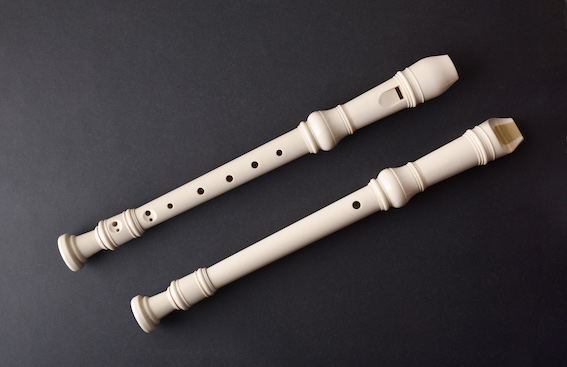Y3. Lesson 10. The Semibreve
Prior learning: Note lengths
Duration: 30 minutes
Materials: Recorders
Keywords: Beat, rhythm, singing, chanting, partners, rhymes, circle games.
Difficulty: ![]()
Prepare
Present
The semibreve (whole note)
Practise
High do'

The semibreve, or whole note, is a fundamental musical note in traditional Western music notation and represents the longest note value in modern usage, equivalent to four beats in 4/4 time. Its visual simplicity, a hollow oval without stems or flags, belies its significance in shaping musical rhythm and structure, serving as a foundational element for understanding the timing and the duration of sounds in musical compositions.
 Melodic development
Melodic development
![]() Students identify a semibreve from singing a known song.
Students identify a semibreve from singing a known song.
- Project the score on the board.
- Lead the class in singing the song.
- When secure, ask the class to show where the minims are found and how many beats a minim lasts for.
- Draw the student's attention to the note of the last measure.
- Sing the word 'snow' and clap four beats.
- Ask how many beats were on the last note [4].
- Teach that this note lasts for four beats and is called a semibreve. It has a hollow notehead like a minim but has no stem.
- Ask students to clap and sing the song, reminding them to clap for four beats on the last word.
 Rhythmic development
Rhythmic development
![]() Students determine which note value is required to make four beats.
Students determine which note value is required to make four beats.
- Project the worksheet on the board.
- Tell the class they are musical detectives and must discover missing notes and their time values.
- Teach that a semibreve lasts for four beats in quadruple time.
- Ask students to look at the first semibreve and answer what needs to be added to a minim to make four beats [another minim]
- The second line has a dotted minim, so what needs to be added to make a semibreve? [crochet]
- In the third example, the answer is again a crotchet.
- The fourth example needs a minim.
 Creative movement
Creative movement
![]() Students sing and use imaginative, creative movements in this classic classroom song.
Students sing and use imaginative, creative movements in this classic classroom song.
- Before singing the song, discuss with students where they think the Big Black Train might be going. As the song plays, encourage them to act out what they might see and do on this journey. You can use props or costumes to enhance the experience (e.g., binoculars for looking out the windows, backpacks for luggage).
- Create a simple dance routine miming a train and its passengers' motions. This could include steps like rotating arms in a wheel motion, swaying side to side like a train car, and using whistle-blowing gestures. Teach the routine to students and perform it together with the song.
- Another idea is to assign each student (or group of students) a train-related sound to make (e.g., "chug-chug" for the wheels, "woo-woo" for the whistle, "clack-clack" for the tracks). Sing the song, and when their particular part of the train is mentioned or suggested, they make their sound. This can be combined with moving around or with stationary positions.
 Listening
Listening
![]() Students listen and identify high do'.
Students listen and identify high do'.
- Project the score of the song.
- Lead the class in singing Lil' Liza Jane.
- When secure, refer to the chorus (refrain), which starts with 'Oh'.
- This note is the highest in this song and is called high do'. It repeats again in the second half of the chorus.
- Point to do and high do' (marked in red) and ask the class to repeat both names.
- Students should sing the last four measures containing high do'.
 Visual learning
Visual learning
![]() Students develop their understanding of the semibreve through visual learning.
Students develop their understanding of the semibreve through visual learning.
- Project and print the score worksheet.
- Ask students to draw three semibreves in spaces and three semibreves on lines.
- Monitor for accuracy of drawing and correct positioning of the semibreves.
 Instruments
Instruments
![]() Students discover a new BAG song.
Students discover a new BAG song.
- Distribute recorders in your usual fashion.
- Demonstrate the song.
- Teach students that the dots next to the double bar lines on the last measure mean to play the song again from the beginning.
- Ensure students hold their instruments correctly and use the gentle tonguing technique with the word 'too'.
- Remind students to count 1,2,3,4 in their heads as they play.

 Part work
Part work
![]() Students clap rhythm syllables in canon.
Students clap rhythm syllables in canon.
- Demonstrate to the class how to read and clap the rhythm of a known song using rhythm syllables.
- When secure, divide the class into two groups.
- One group will start at the beginning, and the other will clap in canon after two beats.
- An example of a suitable pattern is shown on the worksheet.
 Assess
Assess
Suggested lessons
Y1. Beat II

Y1. Beat III

Y1. Beat IV

